I wish I could say I saw Alien on the big screen in 1979, and experienced the glory of Ridley Scott and H.R. Giger’s chest-bursting, face-hugging terrors before they became property of pop culture and parody. Alas, Alien was years before my time. The film was nearly thirty years old before I borrowed the DVD from a friend and watched it alone in a small, dark room. Mistake.
What my tiny, flickering television experience lacked in silver screen quality, it made up for in atmosphere, intense claustrophobia, and the eerie sense of being isolated in the universe. Space is already a terrifying, incomprehensible void to me; adding Alien’s Xenomorph only made me check my locks thrice and start looking up how to make homemade napalm… at least for fiction’s sake.
I watched the film countless times, breaking down the movie down into its basest parts, trying to understand why it succeeded to frighten audiences so thoroughly with its modest budget, low performance expectations, and a fairly lukewarm critical reception. Nowadays, the film is widely considered a classic.
Here’s what Alien taught me about writing horror.
Wait to Show Your (Entire) Hand
This rule applies to horror writers of any ilk: Once the audience manages to get a good look at the scare, it depreciates rapidly and forces the writer to fight a losing battle of diminishing returns. In Alien, Scott is careful to never let his audiences see the entire Xenomorph until the end—we see glimpses of the creature as a newborn, a hand here, a mouth there, but little else until the final showdown in the escape capsule. By that point, the reveal of the Xenomorph is not only necessary, but an integral part of the climax… and the scare.
I tend to think of this as the “new car principle” in horror—once you drive your shiny new monster off the lot, its value drops substantially and cannot be recouped.
The “Strange Form” Principle
A large part of Alien’s lasting appeal is Swiss artist H.R. Giger’s timeless, biomechanical design for the Xenomorph. I won’t spend much time delving into the symbolism of the creature—I’d like to keep this conversation family-friendly—except to point out that the word xenomorph is from the Greek words xeno, meaning “stranger or foreigner,” and morph, meaning “form.” Though the Xenomorph is alien, a “strange form,” its design still has humanoid elements: Bipedal, it walks upright on two feet and possesses two arms, shoulders, and a head (albeit an elongated one). Also note the lack of eyes, which makes the creature appear soulless, thus rendering the audience incapable of feeling empathy for the alien.
The inclusion of humanoid elements on a “strange form” creates a nice cognitive dissonance, too—there are limbs we recognize, organized in a shape that seems to insist upon intelligence, rationality even… but instead, the form embodies a chaotic savagery that shocks and terrifies the audience.
Lastly, to achieve a lasting psychological scare, writers can follow Geiger’s model and make their monsters embody both tangible and intangible fears. In Alien’s case, the tangible fear the Xenomorph presents is a gruesome, painful death; but it also represents the psychological horrors of rape. How so? For those of you who haven’t noticed the film’s symbolism, I’m just going to point to the Pilot Jockey. And the facehugger. And the shape of the chestburster. And the… well, you get the point.
Horror is Flexible
Ridley Scott famously called Alien “the Texas Chainsaw Massacre in space.” True to his pronouncement, the film shares most of its plot characteristics with the standard slasher, particularly in terms of “the Final Girl” trope. In fact, Scott says Ellen Ripley’s last stand in the starship Nostromo was influenced by Laurie Strode’s end battle with Michael Myers in Halloween (1978).
Simply defined, genre is often determined by the specific events that constitute a story’s plot; though the setting, roles characters assume, themes, and cultural values come into play as well. The great advantage horror storytellers have is the ability to step into a speculative world of their choosing and still tell a horror story. Horror meshes well with science fiction, fantasy (particularly urban fantasy), magical realism, steampunk, time-travel, contemporary fiction, crime novels… the list goes on. However, stories may only include horror elements as opposed to being defined specifically as horror projects.
Bet on Setting
An element Alien is renowned for is the gritty interior of the starship Nostromo. It gave audiences a dissonant view of space travel, located in a galaxy far, far away from the Empire’s bright, white hallways and pristine Stormtrooper armor. Alien tore preconceived notions of space travel apart, promptly filling the void with exposed metal, rustling chains, rusted pipes, stuttering lights, and an occasional shock of pure silence.
Alien’s deep space setting has the added bonus of being a completely inhospitable battleground. Settings in horror novels work double-duty, not only providing a backdrop for the action, but being an active obstacle that keeps the protagonists from escaping, surviving, being rescued, or otherwise achieving their goals.
When All Else Fails, Save the Cat
One of my favorite Ripley moments comes toward the end, when she’s living the dream as the Final Girl and banging down a corridor with a gun in one hand, a cat carrier in the other. It’s a horribly awkward way to try and escape the nightmare, and every time I watch the film, I always find myself chuckling because if I were in Ripley’s shoes, I realize I would be doing the exact same thing.
Creating an effective scare isn’t wholly dependent on the creation of a terrifying monster. Paradoxically, I have argued in the past that a storyteller can make any sort of creature frightening, so long as it (1) presents a clear mortal, spiritual, emotional, or psychological threat; and (2) the protagonist engages the audience’s empathy.
In Alien’s case, our empathy and regard for Ripley increases a thousand-fold when she chooses to save Jones the cat, a creature essentially incapable of saving itself from the Xenomorph or evacuating itself during the ship’s self-destruct sequence. Jones’ presence heightens the dramatic tension—we follow Ripley as she searches through the ship, calling for Jones under her breath, all the while trying to avoid the alien creature hunting her through the ship’s corridors.
Don’t kill the cat. Or the dog, for that matter—we’re horror writers here, not monsters.
This article was originally published in February 2015.
Courtney Alameda is a veteran bookseller and librarian. She holds a degree in English Literature with an emphasis in Creative Writing from Brigham Young University. Her debut novel Shutter is available from Feiwel & Friends. She lives in Salt Lake City, Utah. You can follow her on Twitter and visit her website.










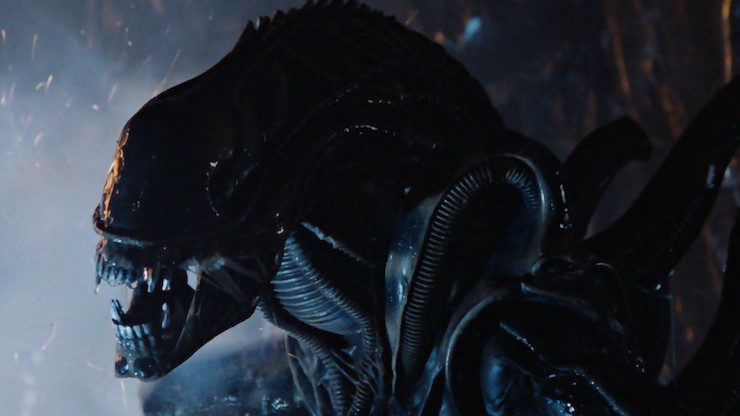

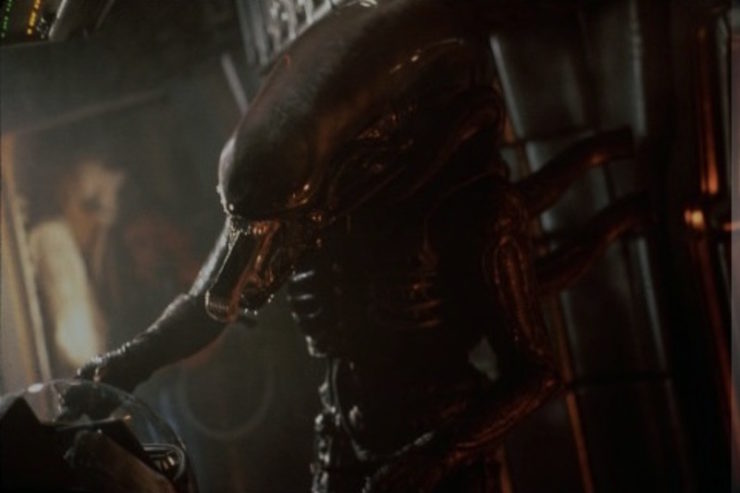
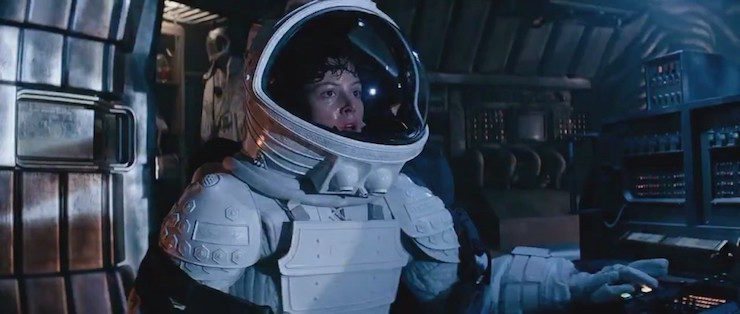
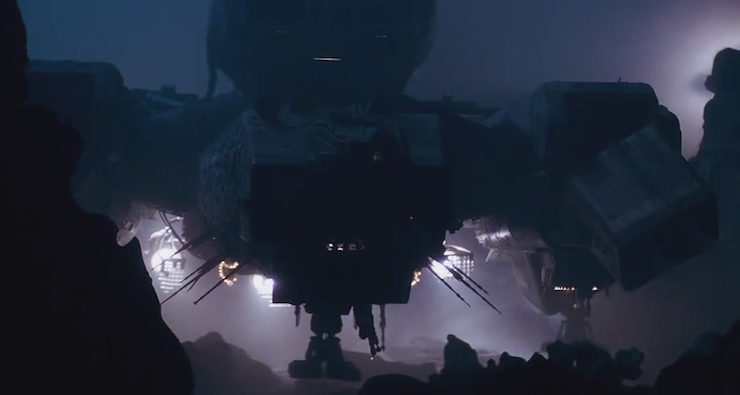
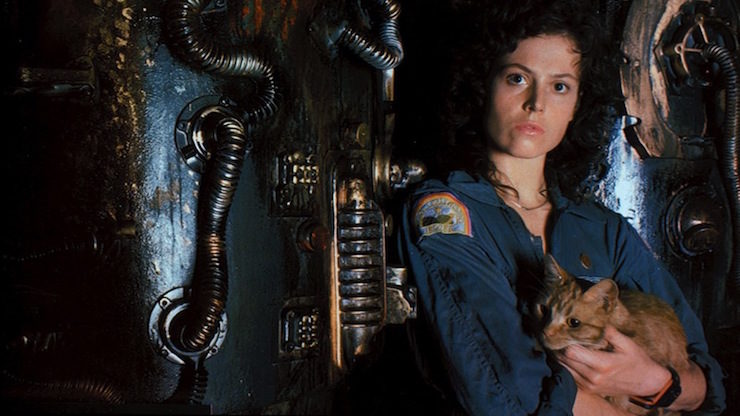
I have a particular love of the xenomorph’s design for what you noted here (though the symbolism I could take or leave) but also the fact it had all these almost cable/wire-like details that you couldn’t see very well. It leaves you thinking that there’s even more to this thing that you can see and also maybe it’s mechanical in someway. Not that I imagined it could have been a robot, but I think that helped it look foreign and mysterious.
Regarding Jones, as I’ve gotten older I realized that Ripley needed that cat as much because she was alone and her coworkers were dead so she wanted to save SOMEONE as because she cared about it. She also would have had no idea what was to come and may have only imagined she could have some very lonely days ahead, during which an animal companion would be far better than none at all.
I saw this while in high school (it may have been one of the first movies I drove to myself). A buddy and I saw it at a huge theater in the burbs since converted to a health club.
If I had to describe Alien in one word, it would be “Relentless.” It never stops. Yes, it has breathing room, it has beats, but it just keeps going and amping up the terror. When we got out of the show, we were exhausted. We plopped down in my father’s Buick Regal, and I hit the button to let a little air in the window… accidentally hitting the button next to my friend. That whirring noise nearly sent him through the roof of the car.
That’s why it’s a classic. It wasn’t the sort of movie that leaves you with nightmares, but it’s a movie you survived.
It’s one of my all time favorites. It’s hard to find movies that are truly terrifying, but this is one of them. Scared the absolute crap out of me when I was a kid. I keep threatening my kid with making her watch it with me. She’s 11 so I suppose I’ll wait. I’m fairly certain the top photo is from Aliens (it’s great too).
I was too young to see this in the theater when it first came out, but I read the Alan Dean Foster novelization repeatedly until I was finally able watch it on videotape; well worth the wait.
THIS REPLY CONTAINS SPOILERS
Another point which adds to the horror: one of your friends is not helpful.
You know you have to fight a monster. You and your friends have a plan. And then one of your friends sabotages the whole thing, whether by being stupid or by accident or, worst of all, intentionally. Setbacks that are not the monster’s fault ratchet up the frustration and tension. When that setback is an actual betrayal by someone you thought was on your side, it turns out what you’re fighting is your opponent. The monster was beside you all along.
That’s why watching Alien again isn’t quite as scary as the first time. The Xenomorph is still scary, and I did jump a few times on my most recent rewatch, but knowing Ash is an android and a traitor when the crew didn’t know: that robbed a bit of the movie’s impact for me. But it was a hell of a shock the first time I saw it.
My favourite horror movie. I watched it when I was 9, it scared me to death and it manages to scare me again every time.
I disagree with the article on one point: the cat is perfectly capable of saving itself, unlike the humans ;-)
I was in my 20s when I first saw it, and also changed everything for me in the way I thought about horror. The setting is really the key element that continues to stand out to me– the claustrophobia of being stuck on the ship and the presence of the monster on board flip-flops the usual slasher script, where “safety” means getting out into the expanse of space, and “danger” means remaining in the familiar location.
Also it had never occurred to me that the xenomorph being eyeless makes it soulless– so true.
Dammit, now I want to go rewatch Alien……
My Father’s best friend at the time Aliens came out delivered medical/dental supplies. He was also from a well to do family and owned a VCR, so when the movie had been released on video they watched it with a canister of laughing gas. He described the experience as a sort of overwhelmed bi-polar hysteria!
As a writer dipping her toes into horror for the first time, this is just the kind of article I need.
I enjoyed all the alien films but was disappointed when they stopped, so I wrote Alien 5, the Final Solution, a continuation with Ripley’s daughter – and offered it to Fox,. Their legal department told me they wouldn’t read it, so, I uploaded the Ebook on Amazon.com and Xinxii.de.
And it sold, wow!